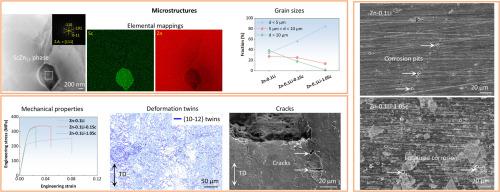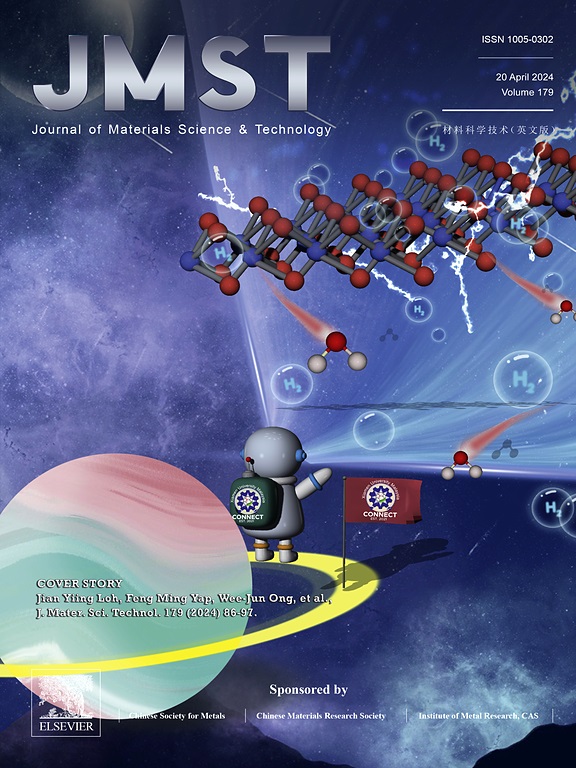Impact of scandium on the microstructure, mechanical properties, corrosion behaviors and in-vitro biocompatibility of a Zn-0.1Li alloy
IF 11.2
1区 材料科学
Q1 MATERIALS SCIENCE, MULTIDISCIPLINARY
引用次数: 0
Abstract
The poor mechanical properties of pure zinc (Zn) restrain its applications in orthopedics, which requires high loading capacity. Alloying with lithium (Li) element can enhance strength, however, the work-hardening rate is impaired with increased Li content. Here, introducing scandium (Sc) into a low Li-containing Zn-0.1Li alloy could effectively refine its microstructure, reducing the average grain size from 10 to 4 μm. The refinement in microstructure led to a significant improvement in tensile strength, improving from 257 MPa of Zn-0.1Li to 341 MPa of Zn-0.1Li-0.1Sc, meanwhile, the work-hardening rate remained positive during the whole plastic deformation stage. The addition of Sc-impaired elongation is due to numerous microcracks formed at the Zn/ScZn12 interfaces, as well as in the large-sized ScZn12 particles. Corrosion tests revealed an accelerated corrosion rate due to the galvanic effect between the Zn matrix and ScZn12 phase. Even so, the Zn-0.1Li-1.0Sc alloy still exhibited superior biocompatibility with rat/mouse mesenchymal stem cells and close osteogenesis capacity to the original Zn-0.1Li alloy. These findings demonstrated that the addition of Sc in low Li-containing alloys could improve mechanical strength without sacrificing the work-hardening rate and biocompatibility.

钪对 Zn-0.1Li 合金的微观结构、机械性能、腐蚀行为和体外生物相容性的影响
本文章由计算机程序翻译,如有差异,请以英文原文为准。
求助全文
约1分钟内获得全文
求助全文
来源期刊

Journal of Materials Science & Technology
工程技术-材料科学:综合
CiteScore
20.00
自引率
11.00%
发文量
995
审稿时长
13 days
期刊介绍:
Journal of Materials Science & Technology strives to promote global collaboration in the field of materials science and technology. It primarily publishes original research papers, invited review articles, letters, research notes, and summaries of scientific achievements. The journal covers a wide range of materials science and technology topics, including metallic materials, inorganic nonmetallic materials, and composite materials.
 求助内容:
求助内容: 应助结果提醒方式:
应助结果提醒方式:


